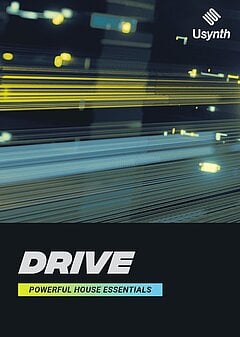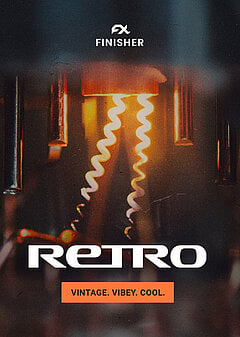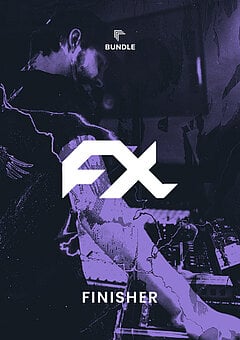Artist Spotlight: Sarah Feldman
Experimentalism, rediscovery, and forging a unique path in the music industry with a diverse set of influences.
JUNE 10TH, 2023
Gathering influences
Sarah wanted to be a musician ever since she was a kid, starting with drums at age 12 and working her way up to playing 6 hours a day throughout high school. Fast forward a couple years and she was interning at a local studio and recording her own music — but her biggest moment wasn’t until 19 when she discovered the record, An Anthology of Noise and Early Electronic Music.
It had detailed liner notes with biographies of all the artists, including Stockhausen, Radigue, Speigel, Schaeffer, Oram, Subotnick, Cage, and Xenakis, who quickly roped her into the world of experimental electronic music. Their music was driven less out of an emotional perspective and more from an analytical one ... and she loved it. A dream come true for someone whose singular focus was to understand music at a much deeper level!
Formal education and rediscovery
This new musical discovery resonated so deeply with her that she decided to study Electroacoustics and Composition at Concordia University in Montreal; after dropping out of university twice to focus on writing music, she’d finally found her place in electroacoustics.
Having learned about so many different aspects of the music industry (a habit which was far from slowing down), it made sense to Sarah that she would fully explore the education side and pursue a career in music academia. Then a couple years in, realizing she was trans marked a major turning point in her identity, and she felt she needed to reexamine the path decided for her by a former version of herself.
With a renewed sense of intentionality, she decided to drop her more experimental pursuits and write music that simply felt amazing for the body, not just the mind ... and for Sarah, that meant launching her foray into pop music. And by taking some time away from academia, she realized just how interesting pop music could be.
What makes her style?
Her journey into pop music came with a new collection of musical influences — Kate Bush an Imogen Heap, 2000s Timbaland (Nelly Furtado and Justin Timberlake), 80s pop like Sade and Chaka Khan, and contemporary singers like Caroline Polachek, Charli XCX, Kim Petras, Rosalía, Shygirl, Frank Ocean. After spending a month in LA, she got to see firsthand how quick and collaborative the musicians there are, while staying picky about what gets released. That balance between spontaneity and critique felt like a magical balance.
But even more so than the artists Sarah listens to (possibly due in part to having such diverse influences throughout her life), her style comes from freeing her impulses and brutally honest self-analysis. While her journey to this point took a number of arduous turns, that's exactly what gives her music its character; this self-reflection comes out in everything she writes, and it allows her to get her own unique sound out of her UJAM plugins.
Staying in the groove
When Sarah sits down to work, she first prioritizes speed to allow her instincts to shine through and stay true to her original intent with everything she writes. Having plugins that respond in kind to her quick work is essential, and every second spent menu-diving is one less she can put into writing and producing — that's why she uses Finisher multi-effects to quickly adjust the sonic palette andUsynth two lay down synth parts for her pop tracks.
But her favorite UJAM plugin by far is Finisher RETRO for its ability to dramatically shape and color sounds with its vintage saturation. If you listen to some of her music, you'll likely hear the ’85 Filter, Few Bits Delay, and Dimensional Chorus presets, as she’s incorporated them throughout a ton of her existing works. Anytime you need to add a bit of dirt and rough up your audio without destroying its underlying character, gentle saturation is a great way to get the job done, especially when it’s modeled after real analog gear.
At the time of writing, her new artist project is still in the works, though as different as it will undoubtedly be, her most recent work is the album Grids, pulling from years of delving deep into the world of electroacoustic music. Its overlapping repetitive loops played at different speeds emulate some of the earliest experimental electronic music, utilizing techniques used by Steve Reich and others.
This is a huge transformation, but that’s part of the fun with having an artist career — exploring a new style, even an entirely different take on what goes into making music, can completely alter your experience. On the tech side, it’s essential to have a few tools that inspire you and allow you to experiment with new ideas quickly, something Sarah’s quite at home with using her arsenal of synths and effects ... and if you want tools that come ready to do much of the heavy lifting for you, this diverse line of synths will get you exactly where you need to go!
Wrapping up
Reinventing oneself can simultaneously be one of the most terrifying and rewarding decisions an artist or music producer can make — have you ever been exposed to a new style of music that you were certain would change your style forever? Maybe even more than once? It might not be the last time, either! There are countless influences left to explore, and as your identity as a person shifts, your style might come along for the ride.
Sarah's journey as an artist is a great reminder that as certain as we are about what we're meant to do, it's normal for this to change over time, and sometimes it changes in an instant. Be open to the opportunities that come with this, and make sure to choose plugins that allow you to do your work effortlessly and open up possibilities you would never imagine otherwise. Check out Sarah’s work on Bandcamp and her Instagram page if you want to hear her music and follow her journey!
Stay up to date
Sign up and we’ll send you an e-mail with product news and helpful stuff every now and then. You may unsubscribe at any time.
Defy Limits
We develop software solutions that enable people to create, consume and interact with music.





